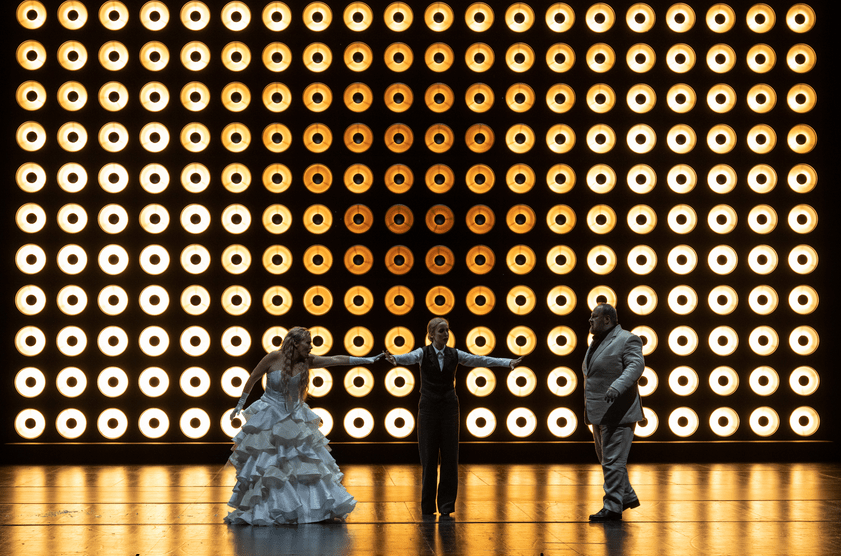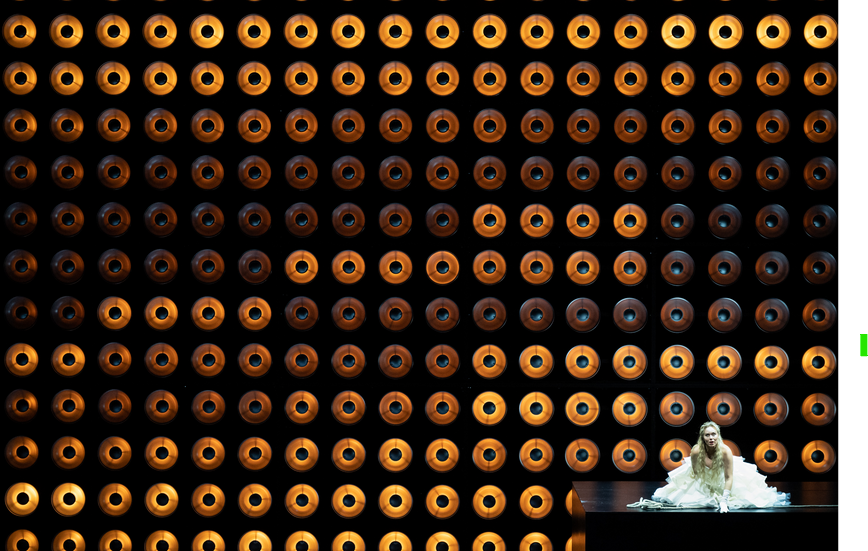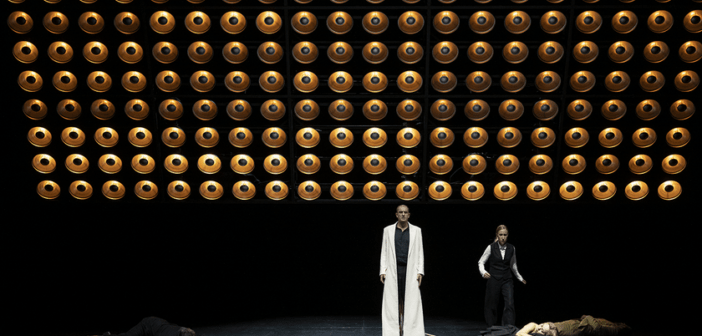Tristan und Isolde is a colossal work, not only due to its length (five hours, including two intermissions) or for the influence of its “Tristan” chord on Western music, but also for its symbolism, as Wagner was greatly influenced by Schopenhauer’s philosophy. He was also conducting an illicit affair with Mathilde, the wife of his benefactor, Swiss businessman Otto von Wesendonck.
Tristan’s plot is simple: an Irish Princess takes pity on Tantris, the knight who killed her betrothed Morold. She tends to him, nursing him back to life, even while knowing he was her fiancé’s killer. Tantris turns out to be Tristan, nephew of England’s King Marke, and he returns to Ireland to claim Isolde as a bride for his uncle. On the ship taking them to Cornwall, an outraged Isolde asks her lady-in-waiting Brangäne to give her and Tristan poison, as she cannot accept the humiliation. Brangäne takes pity and gives them a love potion, after which they fall madly in love. In Act II, the two are caught in flagrante by King Marke during a passionate tryst. Tristan is seriously wounded by his friend Melot who had denounced him to the King. In the final act, Tristan lays dying in his castle in his native Brittany awaiting either death or Isolde. Isolde arrives as Tristan is dying, collapsing next to him.
For Grand Théâtre de Genève’s season-opening new production, Michael Thalheimer opted for the most minimalist staging I’ve ever seen, in a work often given the spare treatment. This concept can be effective, provided the singers are properly directed and motivated. Alas, here, neither proviso was met.
Henrik Ahr’s nearly nonexistent sets were limited to a black block, representing the ship on which Tristan is bringing Isolde to Cornwall, and a wall of 260 spotlights, lit to varying degrees throughout the performance, reflecting the chiaroscuro in Wagner’s music and lyrics. The libretto, especially in Act II’s duet, makes incessant references to light and dark, day and night, that is, love and death. However, the crude attempt of varying the intensity of the spotlights didn’t coincide with either lyrics or music.

Photo: GTG / Carole Parodi
There were a few interesting ideas introduced by Thalheimer, but these trifles couldn’t be mistaken for staging. Act I opens with Isolde pulling the ship on which she is travelling with a rope, meant to convey her despair. To parallel this, Tristan does the same during the orchestral opening of Act III. Brangäne, often portrayed as a maternal confidante, is en travesti as a sexless person. I tried to decipher this Thalheimer oddity, but came up short.
The most disturbing “innovation” was self-mutilation by Tristan and Isolde during their Act II love duet. Initially it looked like a heroin shooting session gone awry, but sitting up close, I noticed Tristan was using a glass shard rather than a needle to harm himself, and apparently from the glass in which Brangäne had served their potion in Act I. Such gratuitous gore adds nothing dramatically; it simply turns off the audience. Thanks to the director’s blood obsession, Isolde does not simply collapse after the opera’s final Liebestod, but rather slits her own throat midway into her final aria. Charming.
This is possibly the most deficient staging of Tristan und Isolde I’ve ever seen. I wish I could simply advise concertgoers to ignore the staging and enjoy the singing, but there too, this production fails Wagner. The two principal singers were barely adequate, with Welsh tenor Gwyn Hughes Jones sadly past his prime. He struggled with this difficult role and pushed his voice to its limits. His vocal shortcomings did not allow for nuance in the phrasing, imperative in such a work, where the text is everything.
Swedish soprano Elisabet Strid fared better. An exceptional actress, she would have been a superb Isolde in a small house, but Geneva’s Grand Théâtre with its capacity of 1500 is unforgivingly too big for her modest voice. Nonetheless, she was a moving and expressive Isolde, whose phrasing was outstanding. Her acting emphasized the character’s fragility and determination. The Act I “Narrative and Curse” scene, in which she recounts Tristan’s murder of her betrothed Morod in battle, curing Tristan back to health, and his subsequent betrayal, taking her as a bride for King Marke, was riveting. Despite the strain on her voice after hours of singing, her Liebestod was truly moving, throat slitting notwithstanding.

Photo: GTG / Carole Parodi
The star of the show was German mezzo Kristina Stanek, whose creamy mezzo contrasted beautifully with Elisabet Strid’s soprano. Her Brangäne was one of the best I’ve heard this past decade, with a glorious timbre, exceptional phrasing and elegant singing. In contrast to several mezzos who sing this role, she sang Wagner as if it were bel canto. I’ll be making every effort to follow her future appearances.
Norwegian baritone Audun Iversen, endowed with a richly virile baritone, was an outstanding Kurwenal. In Act I, his mocking of Isolde and Brangäne was cruelly biting. In Act III, his love and affection for Tristan were truly moving. The exchange between the two men in Act III, which can sometimes be stale, was surprisingly the most stirring moment of the performance.

Photo: GTG / Carole Parodi
Kuwaiti-German bass Tareq Nazmi was a regal and poised King Marke. Endowed with a powerful virile basso cantante, his outstanding diction and interpretation of the Act II lamentation following his discovery of Isolde’s infidelity and Tristan’s betrayal, often the most tedious part of this opera, was heartbreakingly moving. The smaller roles were also well cast.
L’Orchestre de la Suisse Romande is one of the world’s best orchestras. Throughout the performance, German conductor Marc Albrecht opted for slow tempi which weren’t always appropriate. The orchestra was at its best during passages in Acts I and III, as well as during much of Act III. It was less effective during the most intense moments, Isolde’s Act I “Narrative and Curse” and Act II’s love duet.
On a more positive note, there was an unusually high proportion of younger people in the audience, thanks to appealing publicity posters and attractive student pricing. However, one wonders how many will give opera another try after such a dreary experience.
Richard Wagner: Tristan und Isolde
Geneva, Grand Théâtre
09/15*/2024 – September 20, 24 & 27, 2024Gwyn Hughes Jones*/Burkhard Fritz (Tristan), Elisabet Strid (Isolde), Tareq Nazmi (König
Marke), Audun Iversen (Kurwenal), Kristina Stanek (Brangäne), Julien Henric (Melot), Vladimir
Kazakov (A Pilot), Emanuel Tomljenvić (A shepherd/A young sailor)
Choeur du Grand Théâtre de Genève, Mark Biggins (chorus master), Orchestre de la Suisse
Romande, Marc Albrecht (conductor)
Michael Thalheimer (stage director), Henrik Ahr (sets), Michaela Barth (costumes), Stefan
Bolliger (lights), Luc Joosten (dramaturgy)














